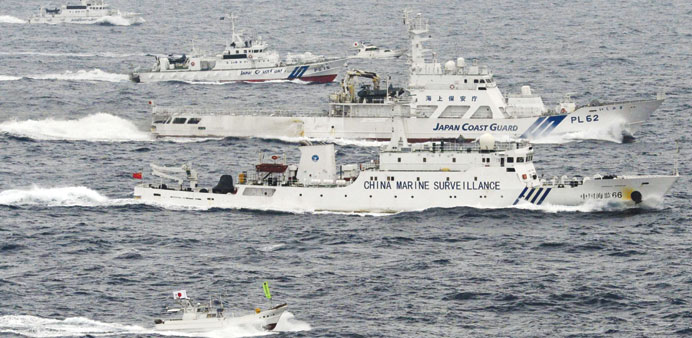|
|
Chinese state-run oil companies hope to develop seven new gas fields in the East China Sea, possibly siphoning gas from the seabed beneath waters claimed by Japan, a move that could further inflame tensions with Tokyo over the disputed area.
Beijing had slowed exploration in the energy-rich East China Sea, one of Asia’s biggest security risks due to competing territorial claims, but is now rapidly expanding its hunt for gas, a cheaper and cleaner energy to coal and oil imports.
State-run Chinese oil and gas firm CNOOC will soon submit for state approval a plan to develop Huangyan phase II and Pingbei, totalling seven new fields, two industry officials with direct knowledge of the projects told Reuters. The approval would bring the total number of fields in what is called the Huangyan project to nine.
China is already working on Huangyan I which has two fields approved. The Huangyan project is expected to cost more than 30bn yuan ($4.9bn), including 11 production platforms now under construction at Chinese shipyards.
If approved, the seven new gas fields would not see a big jump in China’s total gas output, supplying only a fraction of last year’s 106bn cubic metres (bcm) and dwarfed by operations in the disputed South China Sea and Bohai Bay off north China. Chinese geologists said gas deposits in the East China Sea region were much smaller and more scattered.
The greater issue is the political risk if Beijing approves the new gas fields. Tensions over the East China Sea have escalated this year, with Beijing and Tokyo scrambling fighter jets and ordering patrol ships to shadow each other, raising the fear that a miscalculation could lead to a broader clash.
“It’s a sign of impatience on the side of the Chinese, stemming from a lack of movement on the Japanese side on the gas fields issue,” said Koichi Nakano, associate professor of political science at Sophia University in Tokyo.
China and Japan in 2008 agreed to jointly develop hydrocarbons in the area, but Tokyo wishes to settle the issue of maritime boundaries before developing the gas fields.
“The question is what will be Japan’s response and whether they would be able to talk China out of a unilateral move,” said Nakano. “But escalation of tensions leading to a war? I don’t think so. The Americans will be watching this situation with grave concern and may play a role of a mediator here.”
A spokesman for Japanese Prime Minister Shinzo Abe said: “Our understanding is that Japan and China should continue to have dialogue on the issue of joint exploitation of this area, so any unilateral action should not be accepted”.
Even if the National Development Reform Commission gives approval for the new gas fields, the pace of the development could be determined by China’s Foreign Ministry which requests oil companies to seek its approval before every drilling. Such permission may be influenced by tensions with Japan at the time.
China and Japan disagree on where the maritime boundary between them lies in the East China Sea. Beijing says its activities are in the Chinese territories, while Tokyo is worried the Chinese drilling near the disputed median line would tap into geological structures in its waters.
Japan lodged a protest early this month after detecting well construction works at Huangyan I about 26 km west of the disputed median line. China’s foreign ministry rejected the protest as a baseless, saying Beijing had the right to drill in its sovereign waters.
US Energy Information Administration estimated in 2012 that the East China Sea has between 1 and 2tn cubic feet (28-57 bcm) of proven and probable natural gas reserves, a modest gauge versus estimates by Chinese sources at up to 250 tcf in undiscovered gas resource.
If approved, the new gas fields would supply China’s manufacturing hub of Zhejiang province, about 400 km away on the east coast, with production slated to start in the fourth quarter of 2015, said the officials.
The fields would have a combined annual production capacity of nearly 4 bcm, up from the region’s current output of less than 1 bcm, and would account for about 2% of China’s estimated gas output by the end of 2016.
CNOOC and partner Sinopec Corp are already developing Huangyan I, which was officially approved by the National Development & Reform Commission in June 2012 and is due to start producing gas in September next year. Also on the planning board is Pingbei II, expected to come on line in 2016.
CNOOC media officials declined to comment on the new developments and industry sources quoted for the story declined to be identified due to the sensitive nature of the topic.
China, the world’s top energy user, is on a fast track to boost the use of natural gas, with demand for gas forecast to grow more than four-fold by 2030 from the 147 bcm last year. China is the world’s fourth biggest gas consumer.
China first started pumping gas in early 2006 from the Chunxiao field, part of the massive Xihu trough, but territorial disputes have hindered an industry keen to explore and develop the region, Chinese industry experts said.

